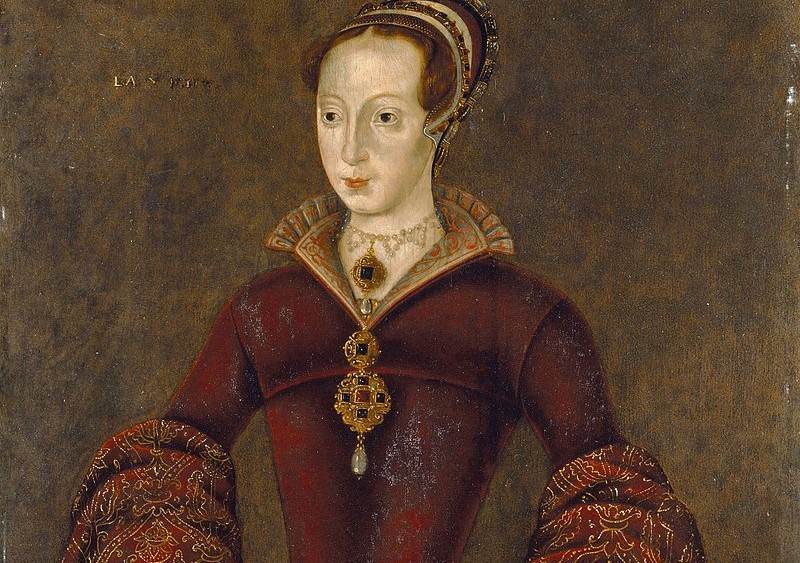
Table of Contents
Tudor jewelry, rich in history and intricacy, still captures our imagination today. In the 1500s, these ornate pieces symbolized not just wealth but also held a key place in Tudor England’s social and political life. Whether it’s the elaborate necklaces of the royal family or simpler items worn by the gentry, each piece reflects the era’s craftsmanship, fashion trends, and evolving styles.
Let’s explore everything there is to know about Tudor jewelry including its origin, history, and significance.
What is Tudor Jewelry?
Tudor jewelry, from England’s Tudor period (1485-1603), was more than just decoration. It reflected the cultural, social, and political landscape of the time under rulers like Henry VIII and Elizabeth I. This jewelry, symbolizing status and power, featured intricate designs and rich materials like gold, silver, pearls, diamonds, and other gems. Its style, influenced by Renaissance art, often included motifs like roses and fleurs-de-lis.
These pieces, known for their elaborate detail, ranged from necklaces and brooches to rings and pendants. Pearls, valued for symbolizing purity, were particularly popular. The era’s advancements in gem cutting also brought more sparkle and sophistication to the jewelry.
Tudor jewelry wasn’t just for women; men wore it too, as a sign of their wealth and status. It often served political purposes, used by monarchs and nobles as gifts to secure favor or show alliances. Tudor jewelry, therefore, was a key part of the Tudor identity, showcasing the wealth, power, and artistic trends of the era.
Origin and History of Tudor Jewelry
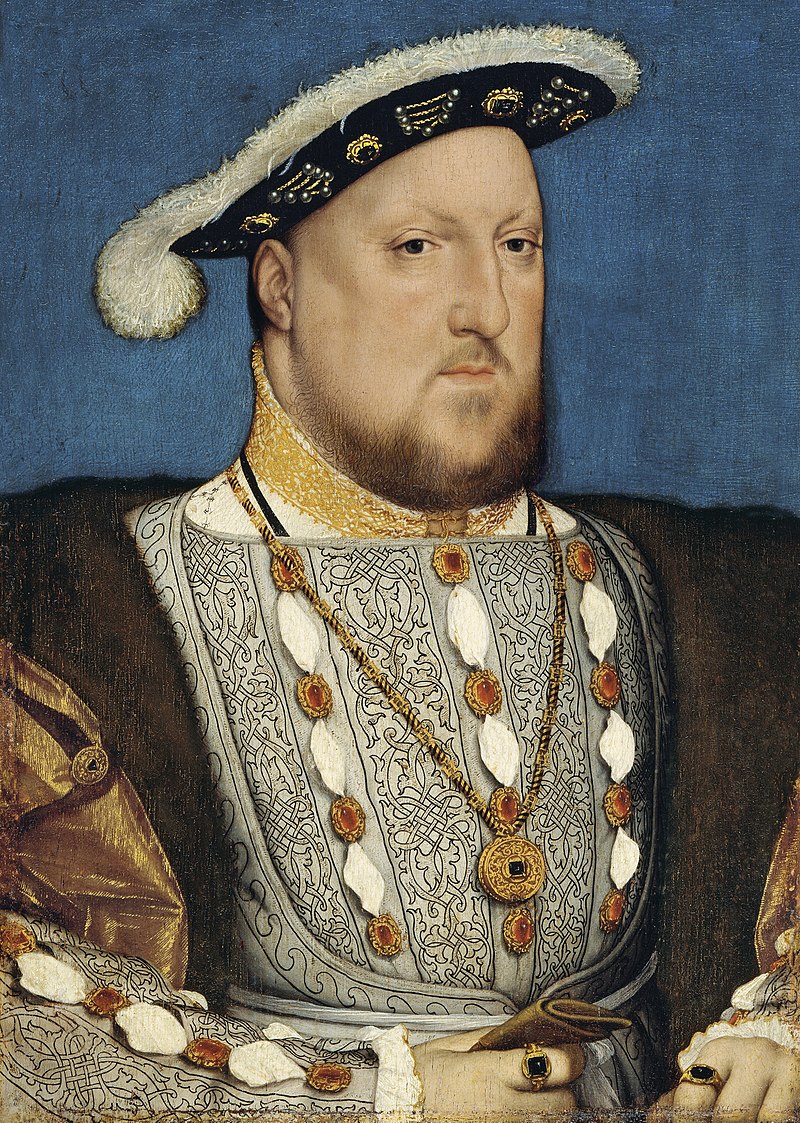
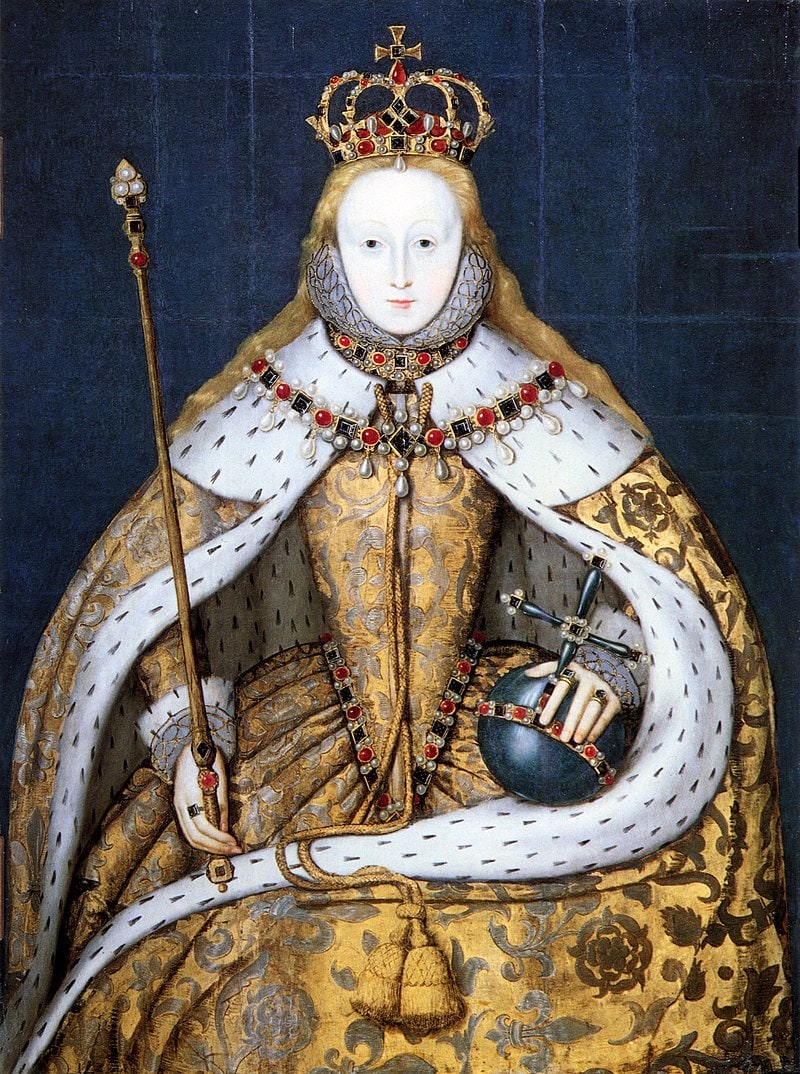
Tudor jewelry, originating during England’s Tudor period from 1485 to 1603, marks an era of significant historical importance. Ruled by the Tudor dynasty, with roots in Welsh ancestry and connections to Penmynydd and Catherine of France, this period saw rulers like Mary I, Henry VIII, and Queen Elizabeth I. Elizabeth’s reign, part of the Elizabethan Era and England’s Golden Age, lasted from 1558 to 1603.
In this time, Tudor and Elizabethan jewelry showcased England’s wealth and cultural growth. Worn by the royal family and nobility, it symbolized more than wealth; it reflected the artistic and cultural progress of the era. Influenced by Renaissance art and growing global interactions, Tudor jewelry evolved in design, craftsmanship, and materials.
New styles, techniques, and influences from across Europe led to the creation of more elaborate and detailed jewelry, typical of the Tudor style. This period’s impact on jewelry design was profound, influencing the future of jewelry-making for centuries to come.
Characteristics of Tudor Jewelry
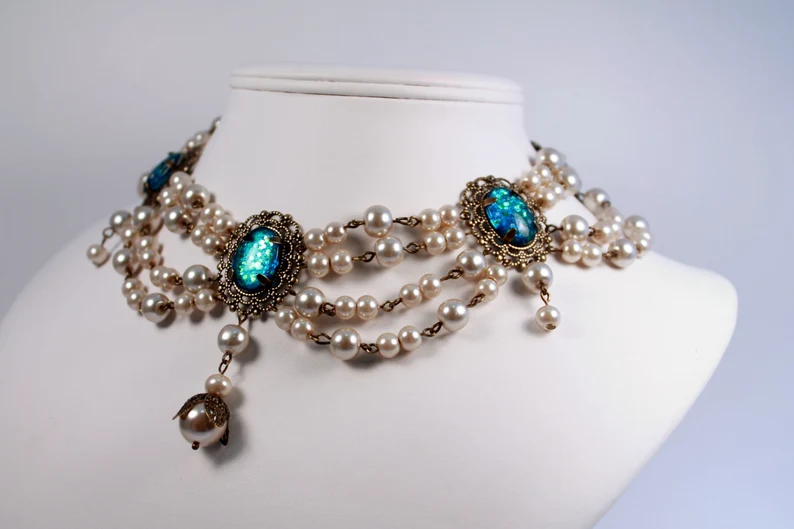
When we look at Tudor jewelry from today’s perspective, we can almost say that it looks rich but recognizable. And that makes sense, considering that a lot of modern jewelry trends and styles are inspired by the jewelry of the Tudor period – jewelry with big and colorful precious stones, lavishing settings made of lots of yellow gold, and additional stones, all usually in as big a size as possible.
Gold, silver, ivory, copper, and gilded metals were most commonly used for Tudor jewelry, and the pieces made out of them were adorned with any precious and semi-precious stone available at the time. Diamonds, sapphires, rubies, emeralds, agate, topaz, opals, bloodstone, onyx, pearls, turquoise, carnelian, crystal, amber, coral, and many other stones were used. Even glass “stones” were worn by nobility and royals on occasion, as long as they were made extravagant and gorgeous enough.
Types of Tudor Jewelry
You can find almost all the same types of jewelry pieces that we have today during the Tudor era too. Again, that’s hardly surprising as many types of jewelry were invented or made popular during the Tudor period. Some of the most famous types include:
1. Rings
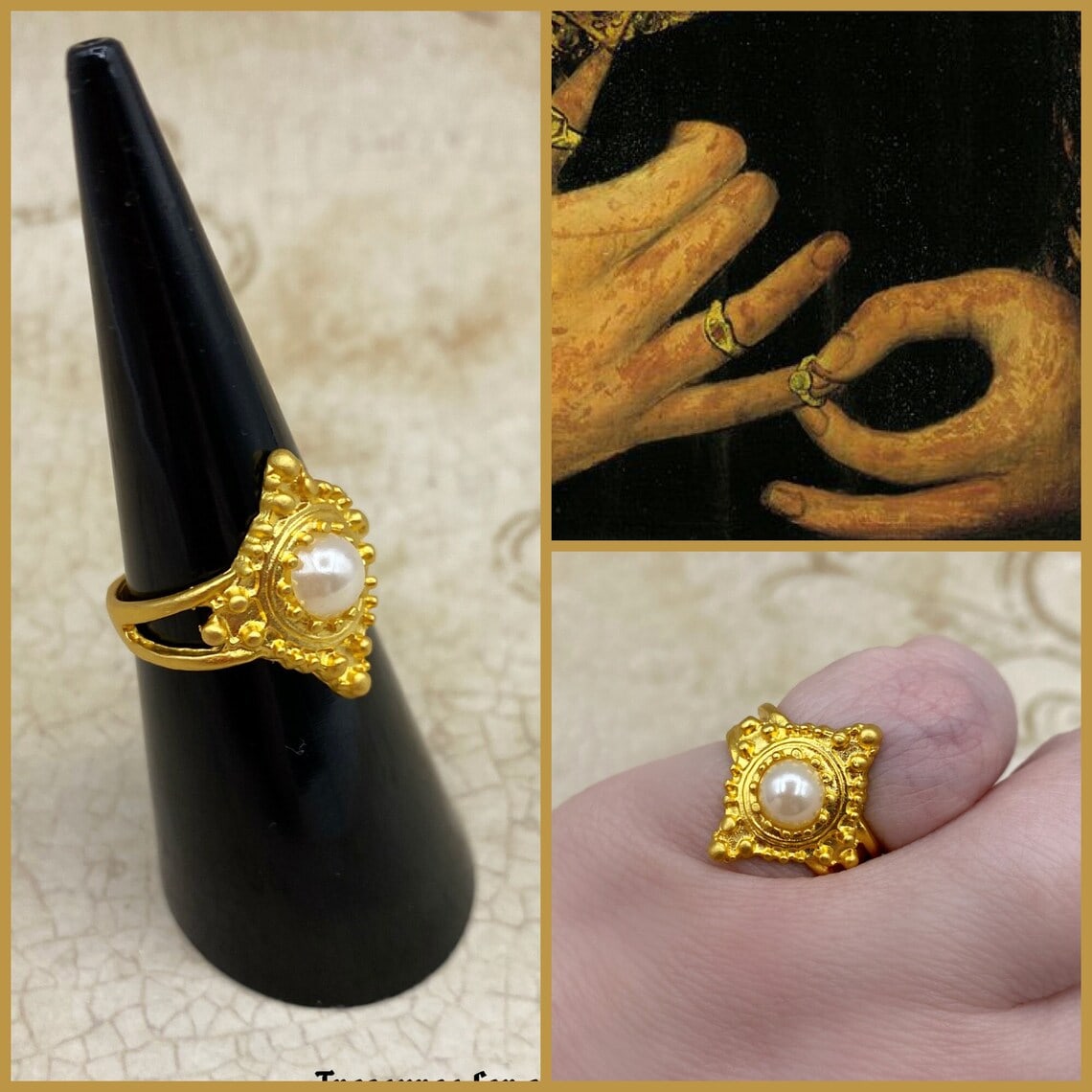
Made in various settings, from solitaire to halo and clusters, usually made out of gold or silver and adorned with all types of gemstones.
2. Chains
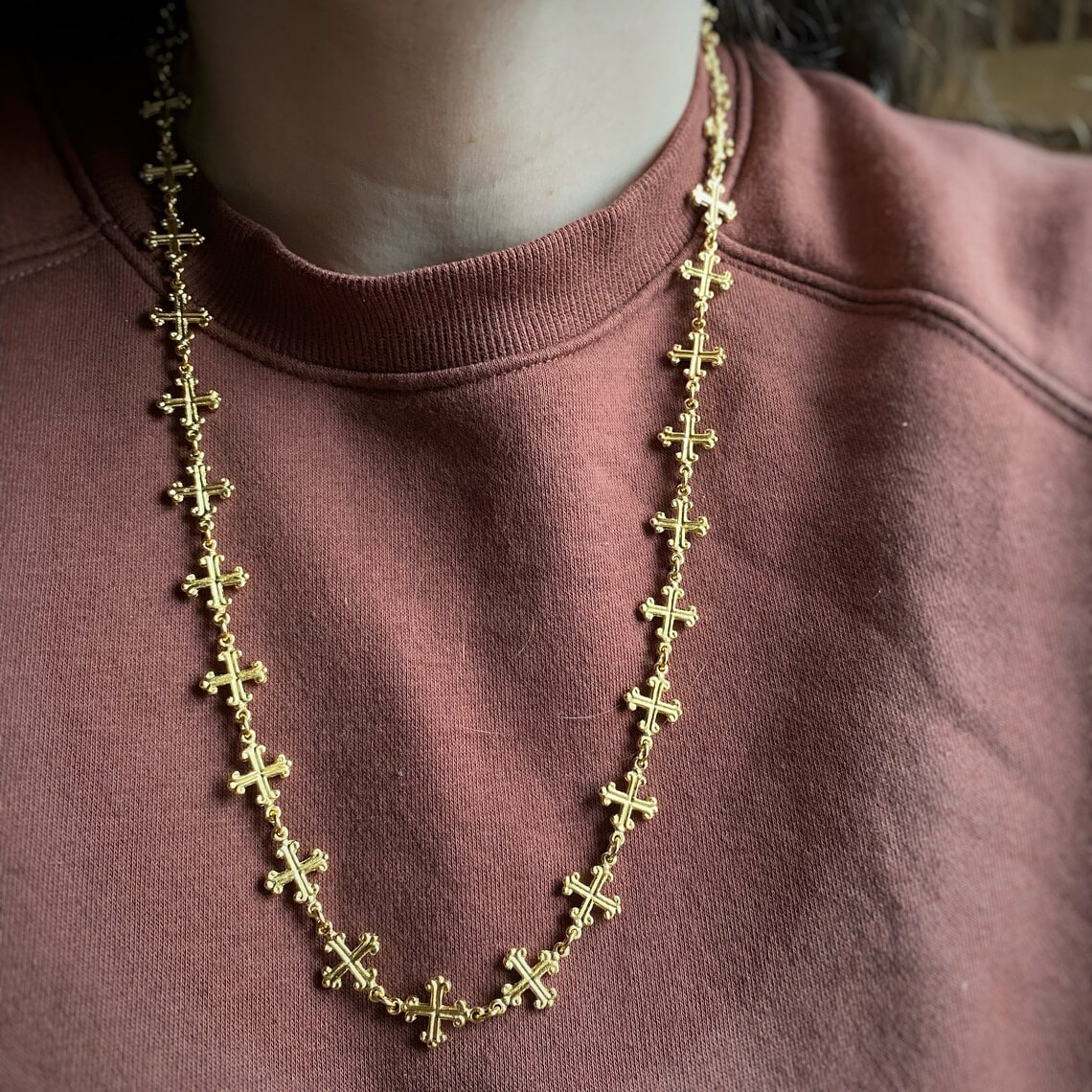
Typically gold and symbolizing a high office, they were the mark of nobility and fealty and were often exceptionally large and bulky.
3. Watches
Pocket watches were one of the many big inventions during the Tudor period, and many were worn as a type of jewelry and not just as a utility item. As such, they were often made of solid gold and adorned with precious gemstones.
4. Earrings
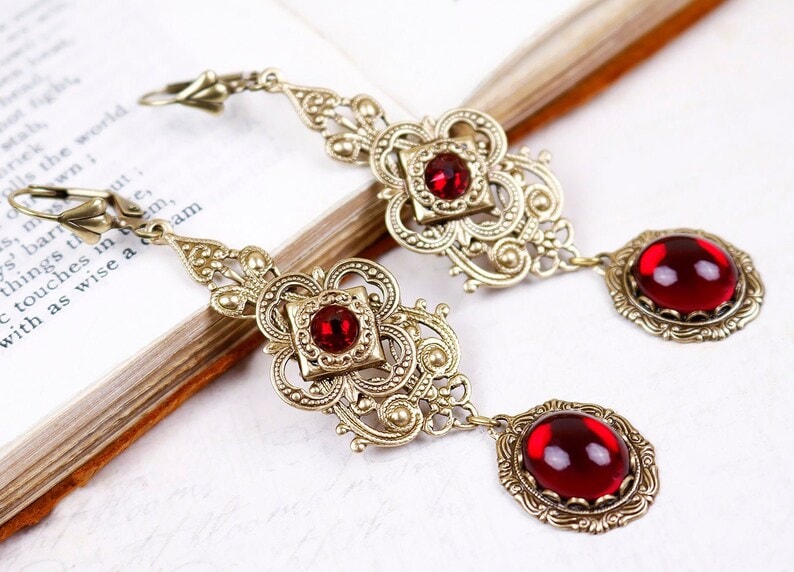
Also called ear-picks at the time, earrings were equally popular among men and women and could come in various designs, from large golden hoops to jeweled earring pendants.
5. Bracelets
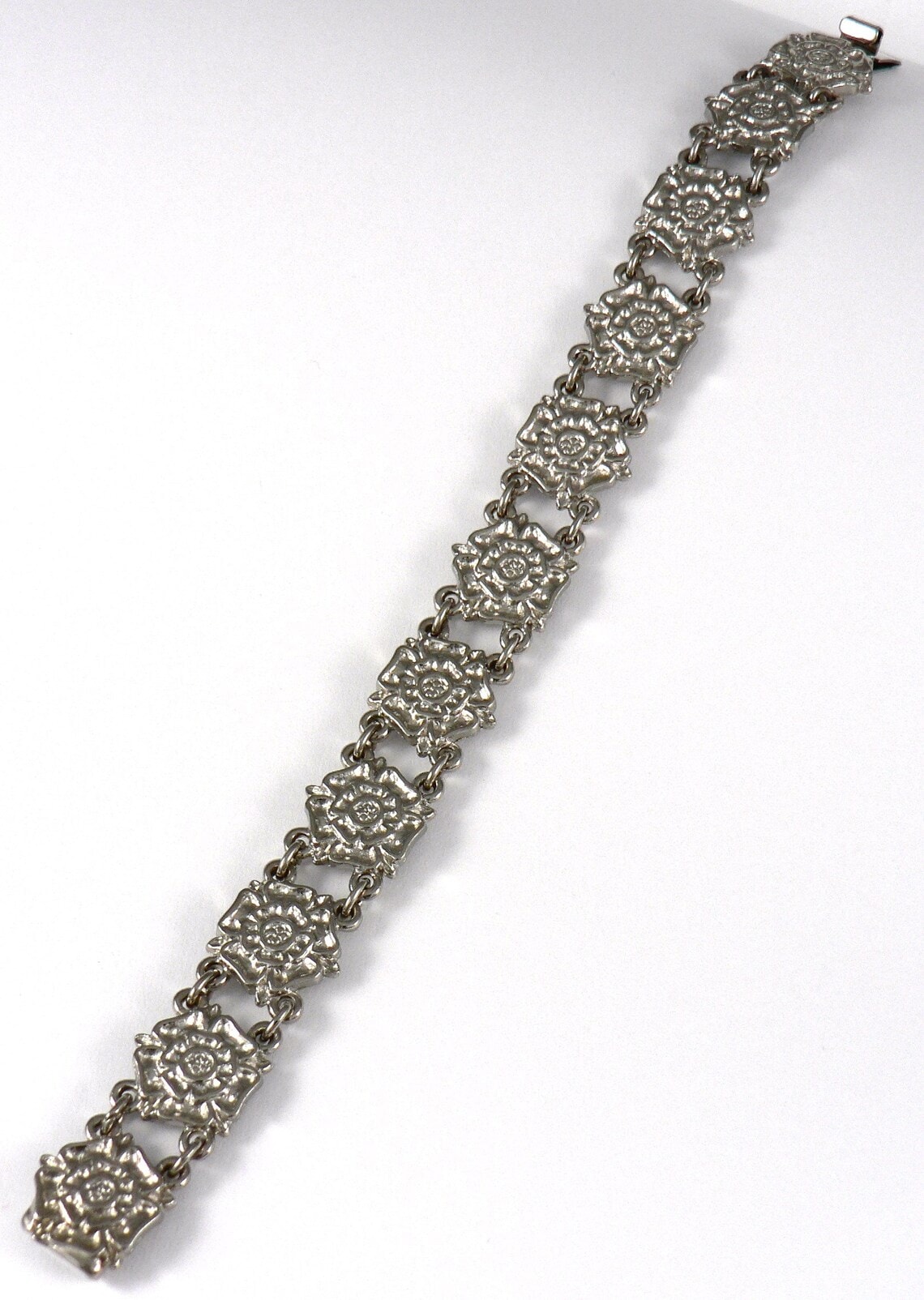
Incredibly diverse, Tudor bracelets could be thin or several inches wide. They could be solid and adorned with jewels or made out of multiple strands of metal, gemstones, and pearls.
6. Necklaces
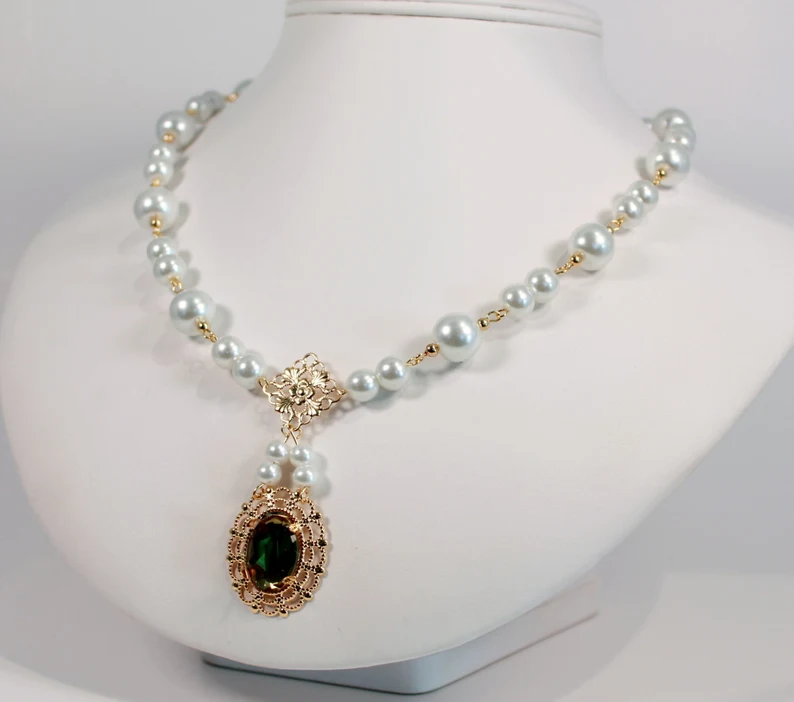
Also popular among men and women alike, necklaces – or carcanets as they were called at the time – could be either long and heavy gold or silver chains with large pendants or they could be tighter and wider chockers, also adorned with lots of jewels and pearls throughout. Men’s chains were usually much heavier and bulkier while women either wore lighter and thinner chains or wide chockers.
7. Buttons
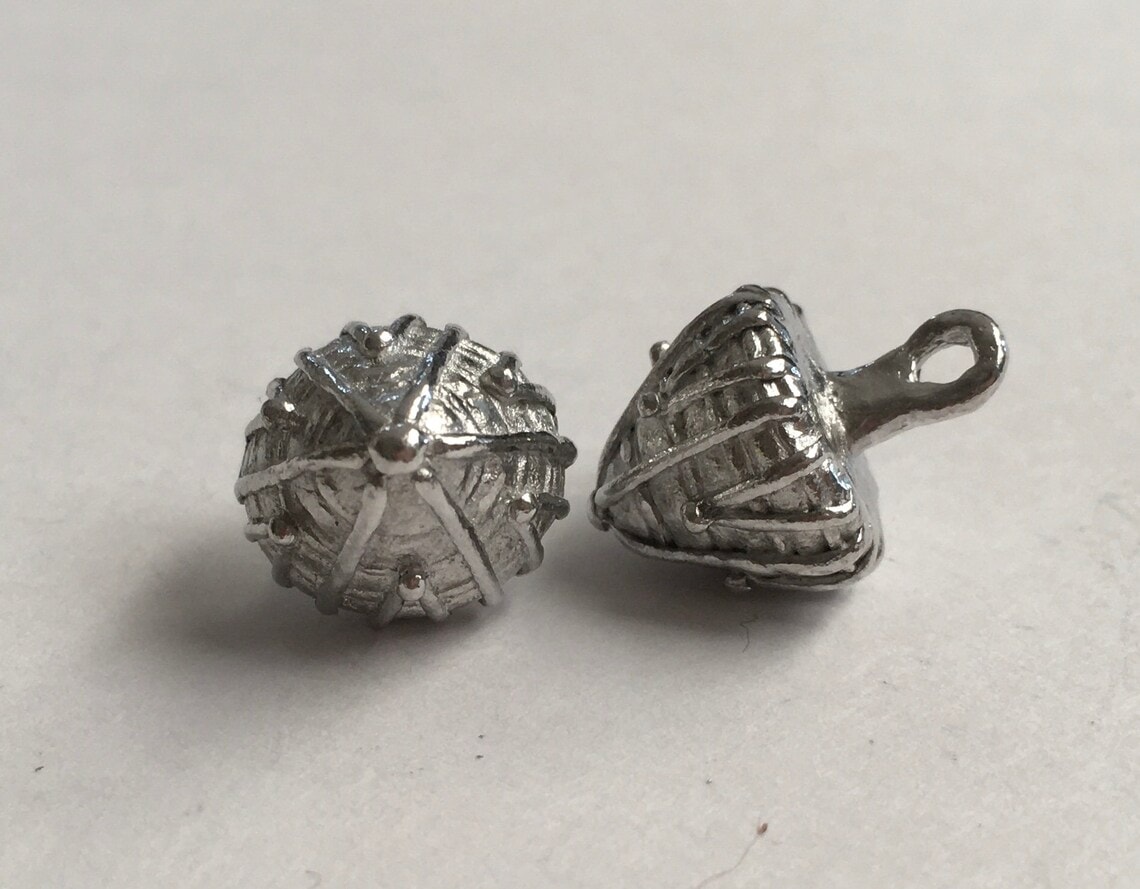
Much more than just a clothing utility item, buttons are jewelry pieces in their own right during the Tudor period. They were made of various precious metals and could be adorned with all manner of precious and semi-precious gemstones. They could also bear the emblem of a particular noble house and would often serve no practical purpose at all but were just jewelry instead.
8. Pendants
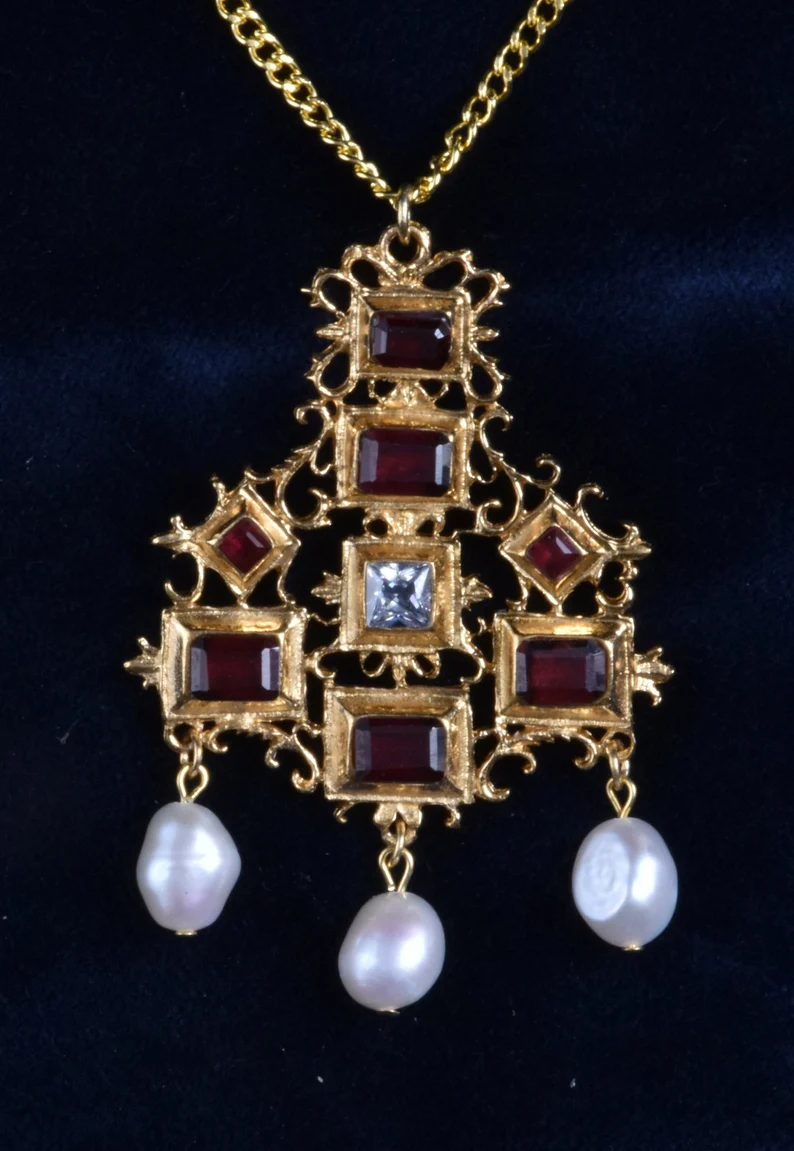
They could either be worn at the end of a neck chain or ribbon, or they could be worn on other parts of the clothing such as hats, sleeves, and girdles. By the end of the Tudor period, pendants had started to replace the brooch.
9. Brooches
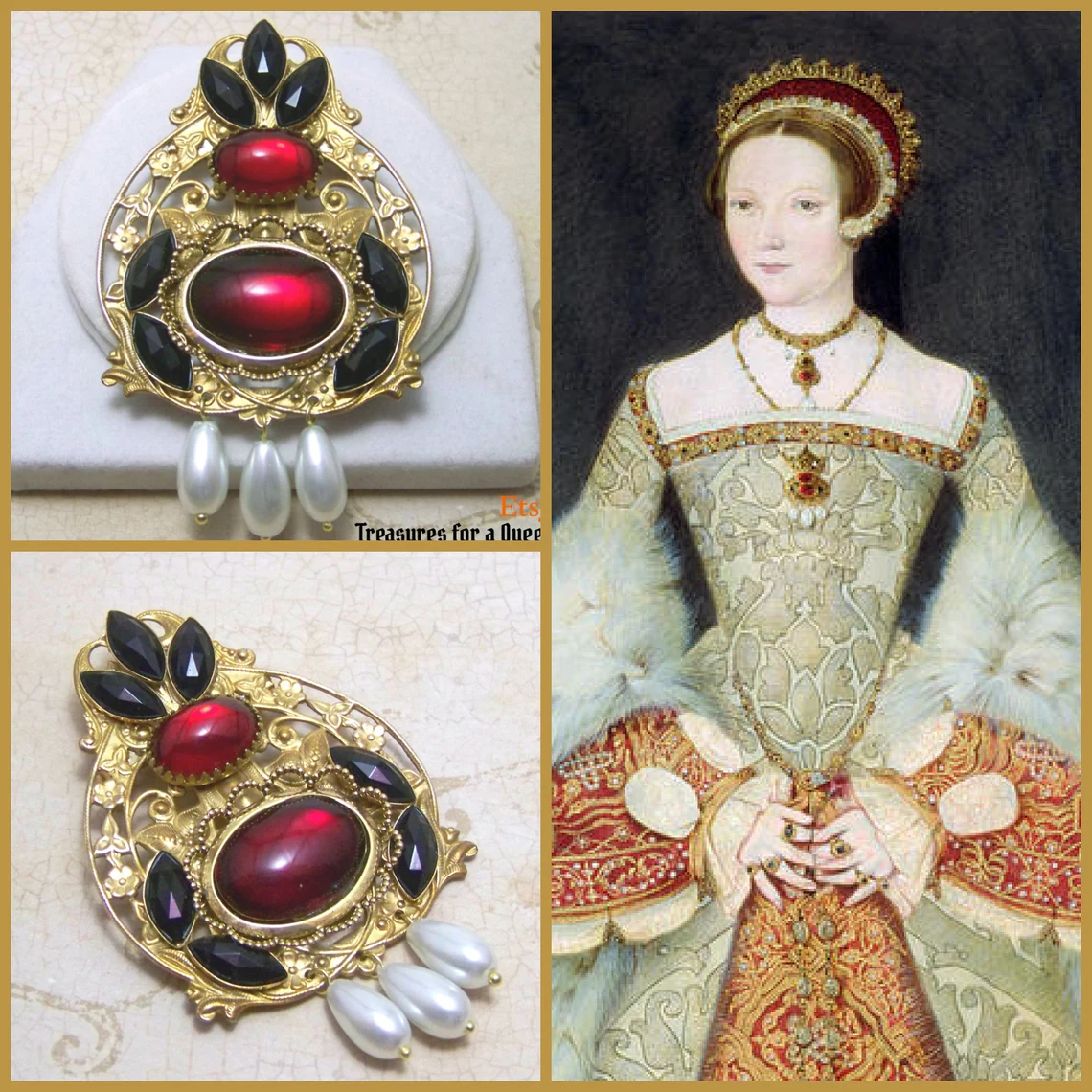
Still popular, especially in the first half of the 16th century, brooches were delicate jewelry pieces attached to clothes and garments via small pins. They could have practical purposes such as fastening a cloak but we’re usually just adorned with colorful gemstones or metal emblems and served as jewelry.
10. Rosary Beads
Made of either colored glass or precious stones, they were often worn by the clergy and were used for praying.
11. Buckles
Used for shoes as well as belts, buckles served a major practical purpose but were also an ideal item to adorn with precious jewels.
12. Pomanders
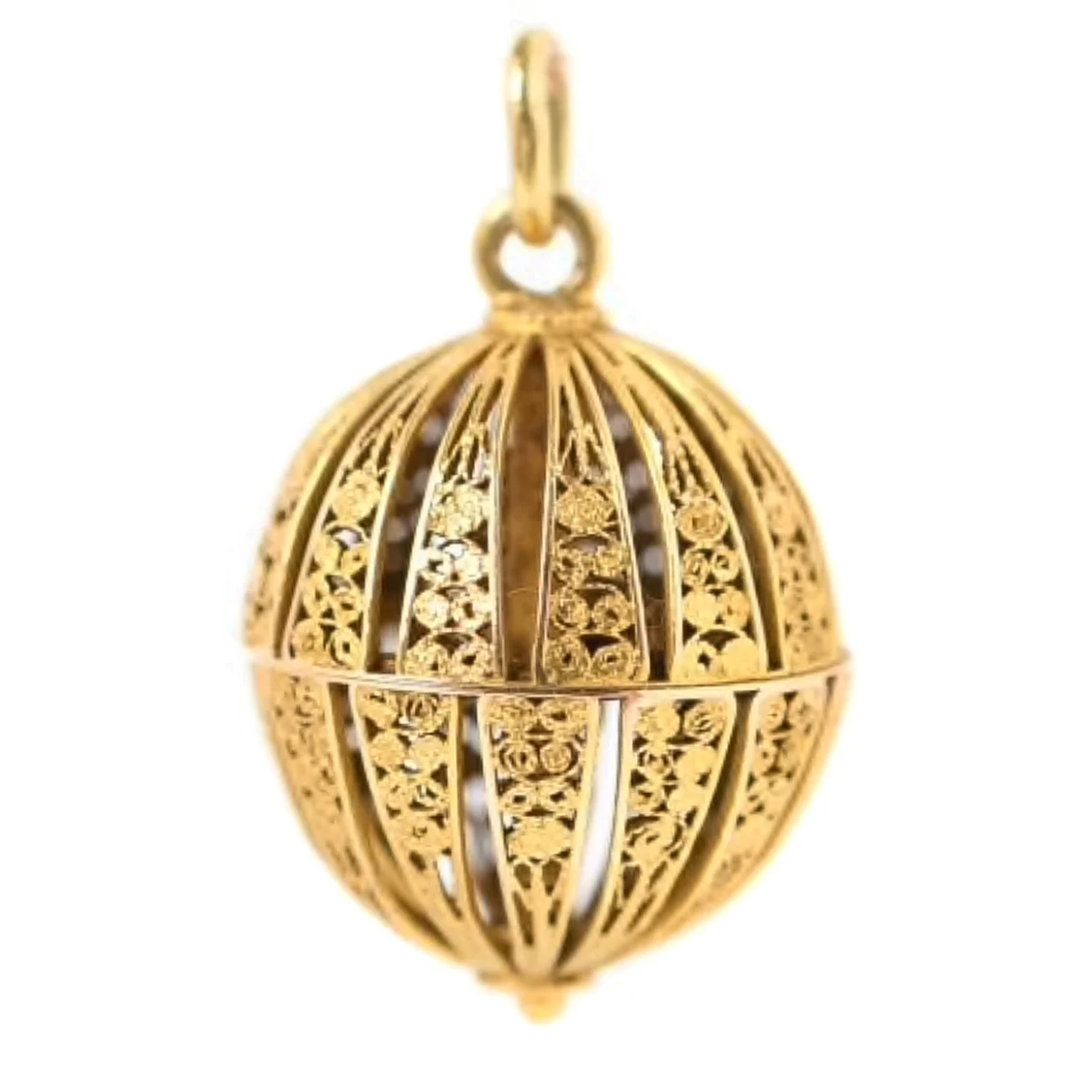
Essentially small decorative cases and pomanders were used to house anything such as perfumes, herbs, or precious items. Interestingly enough, they were often worn as jewelry too. Men and women alike would hang pomanders covered with precious stones from their girdles, belts, or chains.
13. Billiments
Tudor clothing was renowned for its opulence, often adorned with billiments – a lavish array of jewels and gold. This extravagant embellishment was a hallmark of the era’s fashion, symbolizing wealth and status. Countless series of sparkling gems and gold were intricately woven into garments, showcasing the wearer’s affluence and the period’s penchant for luxurious and ornate dressing styles.
What Does Tudor Jewelry Symbolize?
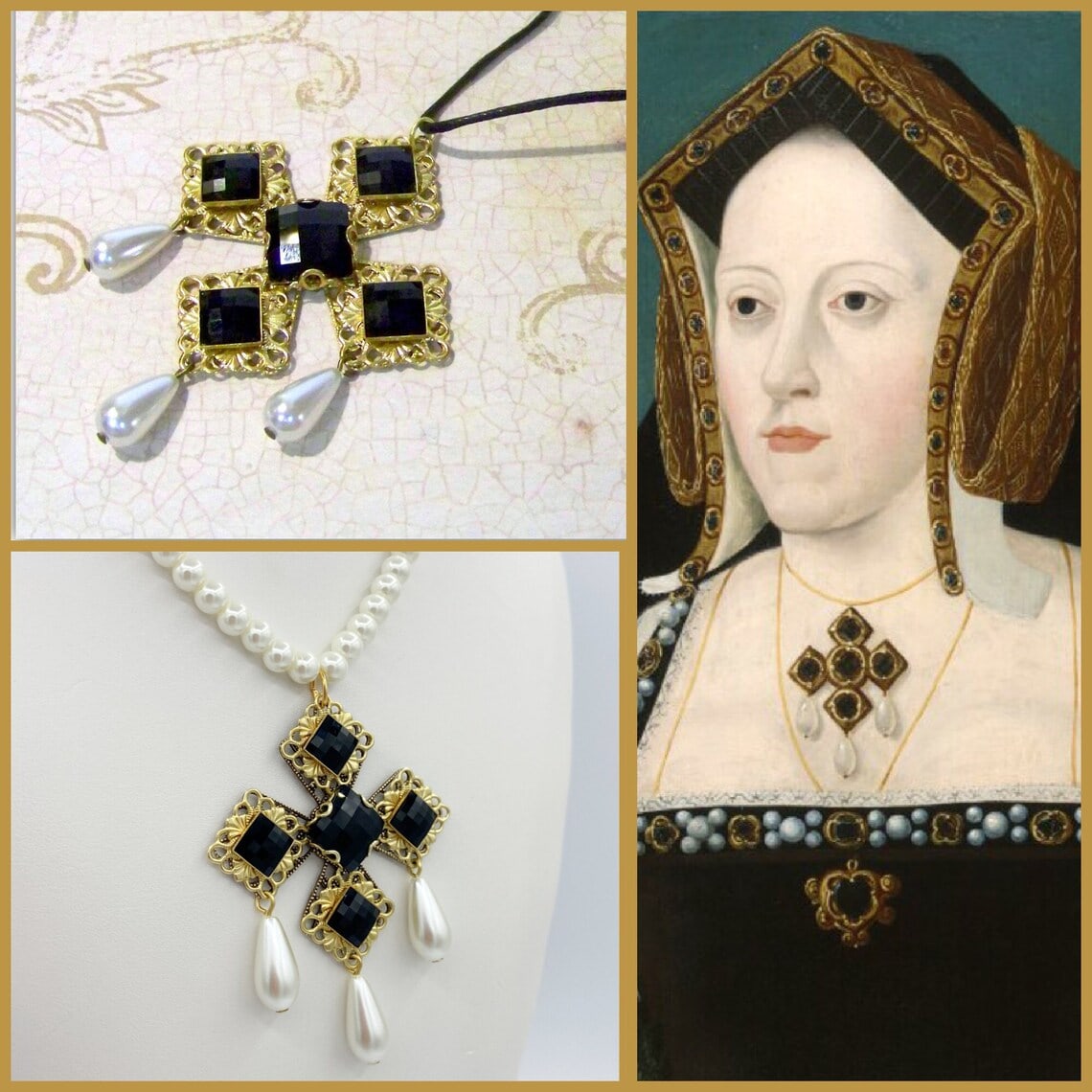
Tudor jewelry in England went beyond just style; it was a powerful symbol of social and political status. Its luxury and detail showed a person’s place in society, with royalty and nobles wearing elaborate pieces to demonstrate their power and influence.
The jewelry also had deep symbolic meanings. Certain gems and designs stood for virtues like loyalty and strength. Pearls, common in Tudor jewelry, represented purity and were Queen Elizabeth I’s favorites. The era’s religious turmoil also influenced jewelry designs, with crosses and religious symbols reflecting devotion, especially during the Reformation.
Moreover, Tudor rulers like Henry VIII and Elizabeth I used jewelry to send personal and political messages. They gifted it to courtiers and diplomats to show favor or create alliances. These gifts often featured personal symbols or portraits, acting as signs of loyalty or affection.
Tudor jewelry was more than just decoration. It was a rich language of power, status, and loyalty, mirroring the complex social and political dynamics of Tudor England.
Does Tudor Jewelry Require Special Care?
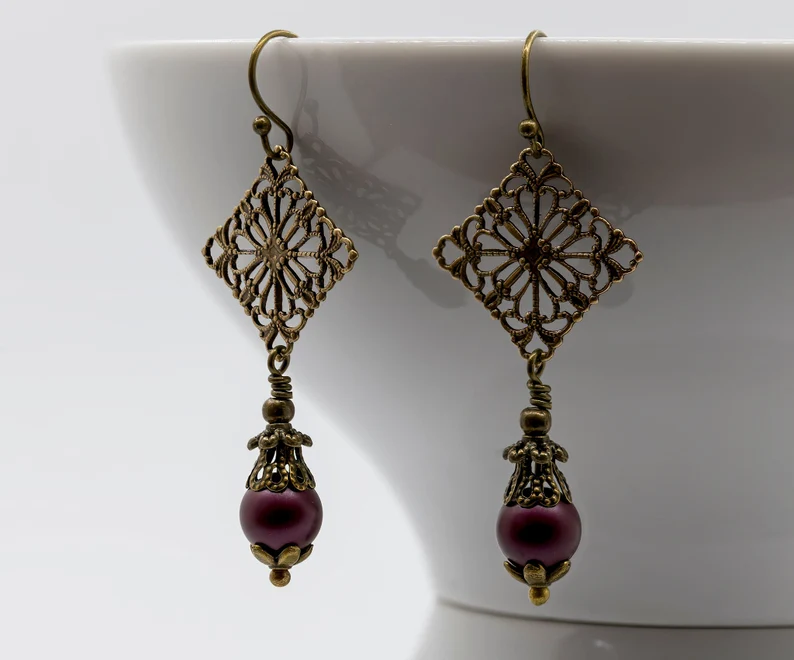
Tudor jewelry, with its historical value and detailed workmanship, needs special attention to keep it looking its best. These pieces, often delicate and made with precious metals and gemstones, require careful handling and specific care routines.
- Protect your Tudor jewelry from harsh chemicals found in cleaners, perfumes, and makeup, as these can harm the metal and gemstones. It’s best to wear the jewelry after applying makeup or perfume to reduce exposure to these substances.
- Regular, gentle cleaning is key. Using a soft, lint-free cloth to clean the metal parts helps remove dirt and oils. For pieces with gemstones, a light wash with mild soap and water, followed by a soft brush, keeps them shining. It’s crucial to know each gemstone’s characteristics, as some might be sensitive to water or certain cleaners.
- When storing Tudor jewelry, keep each piece separate in a fabric-lined jewelry box to prevent scratches and damage. Store them in a cool, dry place to help avoid tarnishing and gemstone damage.
- For more thorough cleaning or repairs, you might want to take your jewelry to a professional jeweler experienced with antique pieces. They can offer specialized care, including cleaning, repair, or restoration.
Where Can I Find Tudor Jewelry?
Obviously, authentic Tudor jewelry today can only be found in the royal palaces and estates of British mobility, as well as in some museums. Modern-style replica Tudor jewelry, however, can be found in many places, both online and on-location.
While there are many stores where you can find Tudor jewelry, we recommend searching on Etsy for an overview of Tudor designs and styles.
Obviously, the quality can vary, as does the price – you can find Tudor jewelry for anywhere between several hundred and tens of thousands of dollars. But that variation applies to all other types of jewelry, as it’s up to the buyer to choose exactly what quality and value they want.
Wrapping up
The Tudor period changed Britain, Europe, and the world in many ways, including in terms of jewelry styles and designs. To this day, many types of jewelry follow the styles of the Tudor period, while other types and designs from other periods have been left behind in history. Regardless, it’s undeniable that wearing a huge Tudor-style golden ring, necklace, or brooch is an easy way to feel like Elizabethan-era royalty for a while.









